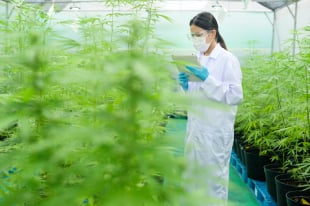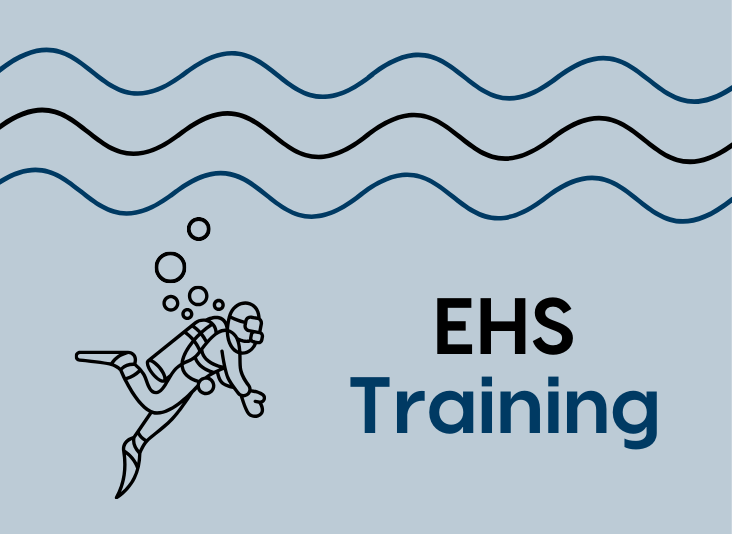8 Components of a Successful Cannabis Workplace Protection Program
Although the medical and retail cannabis industry continues to expand at breakneck speed, there are key workplace safety and compliance risks that threaten growth across the board. Fortunately, proper environmental, health, and safety (EHS) programs can successfully address these challenges, as we’ve noted previously.
For entrepreneurs, the rewards are clear. According to Grand View Research, the value of the cannabis market hit $12.4 billion in 2021 and is expected to expand with a compound annual growth rate of 15.3% from 2022 to 2030. Cannabis retailers’ sales outstrip those of Starbucks, as an industry publication notes.
Research indicates that as of January 2022, there were 428,059 full-time cannabis workers—a number increasing by an estimated 280 employees daily. This ever-growing roster of employees face a variety of dangers, which run from chemicals and machinery to cannabis plants and products.
Cannabis Workplace Risk: Major Industry Threat
Cannabis workplace safety can impact every cannabis operator’s bottom line—and it remains a major innate risk to the industry overall, as the accounting firm PKF O’Connor Davies notes. Cannabis employers are subject to the same Occupational Safety and Health Administration (OSHA) regulations that apply to other industries, as this blog has noted.
Additionally, workplace safety rules can vary from state to state. For instance, California has its own specific regulations, including a 30-hour training program that is not required in other states. Oregon breaks down safety programs by industry segment: growers, processors, and retailers. And so on, across the country. There are also local fire and municipal agencies that have a hand in cannabis facility safety and operations.
Full Set of Cannabis Worker Risks
The safety challenges of this industry are broad-based. Employees face risks and hazards from “seed-to-sale,” from cultivation to distribution, lab testing and manufacturing, all the way through retail sales. For instance, at the start of process, specialists must break down the plants—stripping the buds from the stems—by hand or machine, which may be dangerous to them. Then at the end of the cycle, workers must dispose of organic and industrial wastes generated during the process—another potentially dangerous procedure.
As in any agricultural industry, workers are also exposed to pesticides, various nutrients and fertilizers, and so on. Throughout the process, there is the potential threat of dust, or “kief,” which is common when handling dry cannabis materials, as “Powder & Bulk Solids” magazine explains. Unfortunately, organic dusts, such as fungus, bacteria, and endotoxins are potential workplace hazards as well—as are volatile organic compounds (VOCs), like diacetyl and 2,3-pentanedione.
Workers can ingest and absorb these allergens and other toxins from the air, or through their eyes and skin, causing irritation or worse. These can cause nasal congestion, irritated throats, coughing, and asthmatic reactions, among other effects. Given these potential VOC risks, it is likely that soon OSHA will issue guidelines on their proper handling—and that will demand an employer response.
On top of these constant bodily threats, there are also potentially dangerous events that can occur on the job site, such as fire. These events can result in lawsuits, penalties, and down time—as well as potential loss of profit and brand image. These events also risk the success of the individual cannabis business, and collectively are so severe that they pose challenges to the industry overall.
Any organization that lacks strong EHS programs and training for employees is at risk of immanent—and unpredictable—injuries and instances of noncompliance.
Solutions to Cannabis Industry Worker Risk
Luckily, there are a number of proven tools and processes available to make your cannabis workplace safe and compliant. Already, OSHA requires employers to adopt a variety of training and communications programs, as well as emergency evacuation procedures. For full compliance, employers should prepare to support an OSHA-guided workplace safety culture.
To assist in this process, below are eight safety program components for cannabis entrepreneurs to consider:
- Proper identification, labeling, and storage of hazardous wastes: This is a crucial set of procedures that many do-it-yourself cannabis entrepreneurs may overlook. However, the Environmental Protection Agency (EPA) and state regulators will, in fact, focus on these protocols. This component requires the company to register with the EPA; receive an identification number; and create a federal Department of Transportation (DOT) registration, as well. Then, management must determine the company’s waste generation status (large or small) and conform to the relevant requirements. This procedure involves identifying all the processes on the job site that generate waste—as well as how the waste is disposed of. It also requires demonstrating that employees can, through training programs, make compliant hazardous waste decisions.
- Hazard elimination/mitigation: As noted by the control guidelines from the National Institute for Occupational Safety and Health (NIOSH), initially, companies should consider either the outright elimination of worker hazards or hazard substitutions. Such measures could include swapping out highly volatile or toxic chemicals for less dangerous ones. Additionally, management can implement engineering controls to isolate employees from any given hazard—or apply administrative safety controls, such as training, emergency and communications programs, and so on.
- Personal protective equipment (PPE): Employers should consider PPE to help protect employees, but not as a first line of defense. Hazard elimination, as discussed above, should precede PPE rollout, because such gear provides only limited protection to employees from chemicals and other dangers. And remember, employees must be trained in correct PPE usage for the gear to be fully effective. Employees should also know the safety limitations of the PPE. Management must offer written plans and training in the usage, fitting, and donning and doffing of PPE (in all appropriate languages), as well as its proper care and maintenance. Appropriate PPE includes such gear as:
- Masks/respirators: Grinding machines can create airborne cannabis particles, so management should evaluate workspaces and determine if they need a respiratory protection program. Employees working in these areas may need medical clearance before wearing company-issued respirators.
- Ear protection: If machines can exceed decibel levels permitted by OSHA, companies should consider issuing appropriate hearing PPE as part of a hearing protection program. Such gear applies particularly for any employee working in the vicinity of grinding machines or other loud industrial noises. Specific equipment can include ear buds, earmuffs, or other hearing protectors. Employees working in noisy workspaces may need annual hearing loss tests, as well.
- Uniforms: Sometimes, worker exposure to potential allergens is part of the job—uniforms can help address this gap. Ideally, workers will have special employer-provided protective clothing, which can be laundered on-site. Or, where appropriate, managers can provide some other form of comparable single-use cover.
- Gloves/glasses: When providing PPE, it’s crucial to remember the employees' hands and eyes. Gloves and ANSI Z87.1-rated safety glasses or goggles can protect workers from solvents and toxic chemicals.
- Airflow controls: One way of addressing the risk of cannabis and solvent volatiles is through air controls. A successful HVAC and air purification system will reduce toxins in cultivation and harvesting spaces. A specialist or system can monitor such things as the presence of chemicals and humidity levels in the air, as well as detect substances like mold. Employers can also install odor-absorbing neutralizers or ozone generators for air sanitization and to control various chemical odors.
- Special lab safety measures: Cannabis laboratory processes offer their own unique risks that require unique solutions. One solution is to install proper ventilation systems, fully up to code and tested regularly. There are other specific measures management can take as well, such as restricting lab access to only qualified personnel—or creating laboratory-specific protocols and training programs. Lab layout and equipment are also factors to consider—smaller labs may get by with only fume hoods to help protect personnel, but large laboratories may require systems with commensurate capture and containment velocity.
- Optimum ergonomics: Improper ergonomics is another major hazard in the cannabis industry. In all phases of cannabis cultivation, preparation, and retailing, employers must focus on worker activity and ensure it is safe and not unduly taxing. Employers must factor in the ergonomics of all workstations and job duties—some jobs demand repetitive motion and/or standing or sitting in place for hours at a time. Budtenders and cultivators, for instance, are constantly stooping, bending, and standing, which may cause back problems. Because of all this, employers and managers must consider ways to minimize the ergonomic impact on the workers—and thus avoid their potential injury.
- Local water/fire safety measures: Besides federal guidelines and regulatory agencies, there are also local organizations that will affect workplace safety policies. At a town or city level, fire departments will have jurisdiction over cannabis facilities. For reference, the National Fire Protection Agency has resources outlining cannabis fire safety. Many extractors rely on flammable materials, which will likely require special permitting.
- Special permits: Cannabis operations and requirements may vary by region, facility, or town and city, as well as by the specific end product. So, the various cannabis workplace programs will vary, as well—including the securing of relevant local permits. For example, if an operation has a forklift, that could require a separate safety and training program—on top of any other solutions required. Additionally, more companies are using various gasses to create edible products—this may require yet more complex safety programs and controls. Managers are required to consult local regulations to determine the necessary programs and permits for their operations.
Workplace safety is complex and time-consuming, yet totally necessary. Are you looking to be compliant for workplace safety in your cannabis enterprise? At Triumvirate Environmental, we provide a full gamut of services, including program creation and implementation and training. Talk to us today, or click the button below and learn more about our cannabis services.






